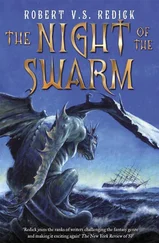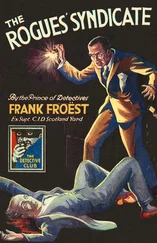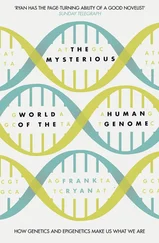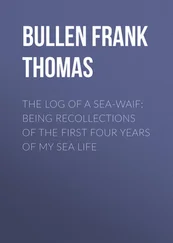'Does anyone know-'
'Of course not. No one knows anything. I tried bloody hard to get something for you. There was nothing on the collisions or the tankers either. A total news embargo. You're right about one thing: the minute anyone starts reporting the incidents, a veil of silence descends. Maybe this is The X-Files , after all.' Olsen frowned. 'In any case, there are too many jellyfish. Too much of everything, really – it's all happening in excess.'
'And no one knows why.'
'They're not rash enough to claim it's all interconnected if that's what you mean. They'll probably blame El Niño or global warming. There'll be a sudden interest in invasion biology, and all kinds of theories will be published.'
'The usual suspects, then.'
'Yes, but it makes no sense. Algae and jellies have been shipped around the world for years. It's not a new phenomenon.'
'Sure,' said Johanson. 'But that's what I'm suggesting. An invasion of box jellies is one thing, a worldwide outbreak of extraordinary phenomena is another.'
Olsen pressed his fingertips together. 'Well, if you really want to make connections. I don't think biological invasions are the right place to start. I'd go for behavioural anomalies. We're seeing attacks of a kind we've never seen before.'
'Did you come across any other new species?'
'Have you anything in mind?' asked Olsen, deliberately.
If I ask about worms, thought Johanson, he'll guess right away. 'Not really,' he said.
Olsen handed over the rest of the papers. 'So when are you planning to tell me whatever it is you're not prepared to say now?'
Johanson picked up the printouts and stood up. 'I'll buy you a drink someday.'
'Sure, you know, if I can ever find time.'
'Thanks, Knut.' Johanson stepped out into the corridor. Students streamed past from a lecture hall. Some were laughing and chatting, others more serious.
He stood still and watched them. Suddenly the idea of a master-plan didn't seem so far-fetched.
GREENLAND SEA, near Spitsbergen, Svalbard Archipelago
That night, in the moonlight, the ocean of ice looked so spectacularly beautiful that the crew came out on deck. Lukas Bauer missed it: sitting in his cabin, bent over his work, he was searching for a needle in a haystack – but the haystack was the size of two seas.
Karen Weaver had helped him enormously, but two days ago she'd disembarked in Longyearbyen, the capital of Spitsbergen, to pursue her research there. She led a turbulent life, thought Bauer, whose own was scarcely more ordered. Since starting out in journalism, she had specialised in marine-related topics. As far as Bauer could tell, she had chosen her career because it allowed her to visit the world's most inhospitable places. Weaver loved extremes, unlike Bauer, who hated them but was so committed to his work that he was prepared to give up comfort for the sake of understanding. It was the same for many scientists: people took them for adventurers, but adventure was the price they paid for knowledge.
Bauer missed comfy armchairs, trees, birds and German beer. Now he missed Weaver. He'd grown fond of the determined young woman, and he'd begun to see the point of what she did. Getting the public interested in your work meant using a vocabulary that wasn't a hundred per cent accurate, but that everyone could follow. Weaver had made him realise that all his work on the Gulf Stream would be lost on people if he couldn't explain how the current started or where it flowed. At first he hadn't believed her. Just as he'd refused to believe that no one had heard of drifting profilers, until Weaver had convinced him that they were too new and specialised. But not knowing about the Gulf Stream? Weren't children taught anything at school?
Weaver was right that his work needed public exposure: he could broadcast his anxiety and put pressure on the culprits. And Bauer was worried.
The source of his troubles lay in the Gulf of Mexico, where temperate surface water flowed from Africa along the coast of South America. Warmed by the sun in the Caribbean basin, it continued northwards, an inviting stream of salty water that remained on the surface because of its heat. The Gulf Stream, Europe's mobile heater, wound its way north, carrying a billion megawatts of warmth, equivalent in energy to 250,000 nuclear power stations. It travelled as far as Newfoundland where it mingled with the cold waters of the Labrador Current and dispersed. Some pinched off to form eddies, swirling rings of warm water that meandered northwards as the North Atlantic Drift. Prevailing westerlies saw to it that plenty evaporated, conferring ample rain on Europe and causing the water's salinity to soar. Dubbed the Norwegian Current, the water continued along the coast of Norway through the North Atlantic, staying warm enough to allow ships to dock in south-west Spitsbergen even in mid-winter. It was only when it reached Greenland and northernmost Norway that the stream of heat was halted. There, it hit the Arctic, where the icy ocean and chill winds cooled it rapidly. The Gulf Stream had always been very salty; now it was immensely cold too. The heavy water fell, sinking vertically – not as a front but in channels of water called chimneys, which were difficult to pinpoint since they moved with the swell. Convective chimneys measured twenty to fifty metres across, with ten or so clustered in the space of a square kilometre; but their exact position varied daily, depending on the wind and waves. The critical point about them was the suction effect the sinking water caused. This was the Gulf Stream's real secret: it didn't flow north but was drawn there, sucked onwards by the powerful pump at the bottom of the Arctic. When the icy water reached a depth of between 2000 and 3000 metres, it started on the return leg. It was a journey that would take it once round the world.
Bauer had released a batch of floats in the hope they would follow the path of the current, but trying to find the chimneys in the first place was difficult enough. They should have been everywhere. Instead the giant pump seemed to have packed up entirely or begun its work elsewhere.
Bauer had come here because he was aware of the problem and he knew what would follow. He hadn't expected to find things working perfectly, but he wasn't prepared to find nothing at all.
It was seriously worrying.
He'd confided his concerns to Weaver, before she'd left him. Since then he'd been updating her and entrusting her with his innermost fears. Several days ago his team had detected a dramatic rise in the methane content of the water. Now he was considering the possibility that it was linked to the disappearance of the chimneys. He was almost sure of the connection. Hunched over his data, Bauer examined stacks of calculations, diagrams and charts. Every now and then he emailed Karen Weaver to tell her of his latest findings.
He was so caught up in his work that he was oblivious to the shaking. His teacup made its way to the edge of the table and toppled over, pouring its contents on to his lap. 'Oh, blast,' he muttered. Hot tea soaked through his trousers and down his legs. He got up to examine the extent of the damage.
Suddenly he stiffened, straining to hear the noises outside.
Screams. Someone was screaming. Heavy boots pounded the deck and the ship vibrated furiously, throwing him off balance. Groaning, he collided with his desk. The ground fell away beneath him, as though the vessel had fallen into a hole. Bauer sprawled backwards and fear took hold of him. He scrambled to his feet and stumbled into the passageway. The shouts were louder now, and the engine started up. A man was yelling in Icelandic. Bauer couldn't understand the words, but he could hear the terror, which was echoed and amplified in the voice that replied.
Had there been an underwater earthquake?
Читать дальше












